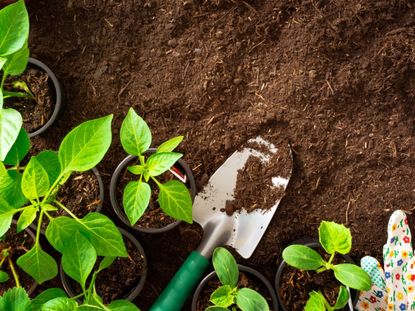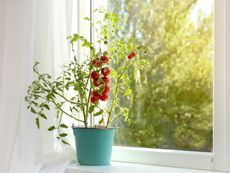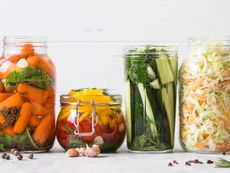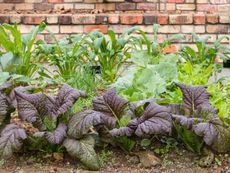Crop Planting Info: When To Plant Your Vegetable Garden


People differ in the exact times they plant their vegetable gardens. Keep reading to learn the best time to plant vegetables.
When to Plant Your Vegetable Garden
It's easy to go by the frost-free dates that are expected during spring or fall as well as the hardiness of the plants themselves. To determine the best time to plant vegetables in the spring, check the hardiness zones for your area. These zones can be found on individual seed packets or in most gardening books.
Crop Planting Info
Most crop planting info on when to plant vegetables centers around the types of crops grown-- early, hardy/half-hardy, midseason, and tender crops.
Planting early crops
Early crops mature faster; therefore, they can be easily replaced with other vegetables like lettuce, bush beans, or radishes to fill the empty spaces once these earlier crops have faded out. This technique, which is referred to as succession planting, also extends the growing and harvesting season.
Planting midseason crops
Normally, early to midseason crops are planted in early spring while fall crops are generally planted in summer. The first planting should be done as early as possible but only when there is no danger of any frost. Hardy plants normally tolerate temperatures below freezing and are usually the first to be put into the garden as soon as the soil can be worked, which is typically about four weeks prior to the last frost date. The half-hardy varieties tolerate light amounts of frost; thus, can be put into the garden slightly before the last frost is expected.
Planting hardy crops
Crops that are hardy typically include:
Some of these vegetables, such as peas, cabbage, broccoli, radishes, and cauliflower are also considered fall crops and can be planted in late summer. Potatoes, beets, carrots, lettuce, and artichokes are some of the half-hardy types, which typically are followed by the hardy varieties in the garden.
Gardening tips, videos, info and more delivered right to your inbox!
Sign up for the Gardening Know How newsletter today and receive a free download of our most popular eBook "How to Grow Delicious Tomatoes."
Planting tender crops
Tender crops do not tolerate cooler temperatures and are easily damaged by frost. As a result, these crops should not be put into the garden until well after any danger of frost. More often than not, you should wait at least two to three weeks after the last frost just to be safe. Many of these tender varieties require temperatures of at least 65 degrees F. (18 C.) in order to thrive. The most susceptible plants to cold temperatures include:
The most important thing to keep in mind when it comes to vegetable gardening is that what you grow and when you grow it really depends on the locality in which you live, as variables in both climate and temperature have a huge impact with regards to individual plant requirements.

Nikki Tilley has been gardening for nearly three decades. The former Senior Editor and Archivist of Gardening Know How, Nikki has also authored six gardening books.
-
 Grow a Bathroom Oasis: 8 Best Bathroom Plants With No Light or Low Light
Grow a Bathroom Oasis: 8 Best Bathroom Plants With No Light or Low LightSome apartment dwellers grow the best bathroom plants with no light or low light. Read how one of our favorite plant lovers does it in the big city.
By Teo Spengler
-
 "My Worst Mistake" – Gardeners Share 10 Hard-Learned Lessons
"My Worst Mistake" – Gardeners Share 10 Hard-Learned LessonsGardeners never stop learning, and sometimes our mistakes are the best teachers. But why not save time and heartache by learning from other gardeners' failures?
By Melanie Griffiths
-
 How Many Vegetables To Plant Per Person For A Year
How Many Vegetables To Plant Per Person For A YearGauging how much to plant in a vegetable garden can eliminate waste while still producing enough for your family. Click for more.
By Bonnie L. Grant
-
 13 Perennial Fruits And Vegetables You Only Have To Plant Once
13 Perennial Fruits And Vegetables You Only Have To Plant OnceLooking to set it and forget it? Find out which fruits and vegetables can be grown as perennials.
By Laura Miller
-
 11 Edible Plants For A Year-Round Garden In A Bucket
11 Edible Plants For A Year-Round Garden In A BucketWant to know how to grow food inside your house and which foods do best indoors? Click here to learn all about it.
By Bonnie L. Grant
-
 Frost Tolerance Of Vegetables From Least To Most Hardy
Frost Tolerance Of Vegetables From Least To Most HardyHow cold can vegetables tolerate? Knowing which veggies will survive frosts and freezes is essential for the success of your garden. Click here for more.
By Laura Miller
-
 Best Vegetables To Pickle Straight From The Garden
Best Vegetables To Pickle Straight From The GardenPickles aren’t limited to just cucumbers. Read on for tips on pickling your fresh veggies.
By Amy Grant
-
 Benefits Of Planting In Fall Vs. Spring Vegetable Plots
Benefits Of Planting In Fall Vs. Spring Vegetable PlotsLearn why some vegetables do better if you plant them in fall instead of spring.
By Laura Miller
-
 Interplanting Vegetables In The Fall Garden
Interplanting Vegetables In The Fall GardenLearn all about the benefits of interplanting vegetables for your fall garden.
By Laura Miller
-
 Best Vegetables For Growing In Perlite
Best Vegetables For Growing In PerlitePerlite is a natural growing medium that comes from super-heated volcanic glass. In some cases, it works better than soil. Read on for more info.
By Laura Miller